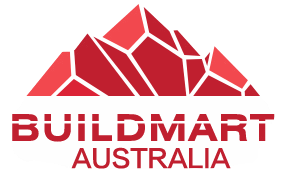When it comes to installing artificial grass, the preparation and choice of base materials are crucial steps that can significantly impact the appearance, functionality, and longevity of the turf. The best surface or base for laying artificial grass involves a combination of stability, drainage, and cushioning to mimic natural soil’s properties while overcoming some of its limitations. This blog will explore the optimal base for artificial grass, the role of sand in its installation, and the consequences of various base choices, including laying artificial grass directly on dirt.
The best base for artificial grass typically consists of a compacted, drainable sub-base layered with a fine-grained aggregate. The process begins with removing the top layer of soil to create a stable foundation, followed by the addition of a crushed stone or gravel layer. This layer is compacted to provide a firm base that allows for efficient drainage. Over the compacted stone, a layer of finer material, such as decomposed granite or a similar aggregate, is added. This finer layer is also compacted and smoothed to create a flat, stable surface that supports the artificial turf above while allowing water to percolate through to the drainage system.
Incorporating sand under artificial grass is a common practice that serves multiple purposes. Sand acts as a ballast, helping to weigh down the turf and keep it in place, which is particularly important in areas with high wind or on slopes. Additionally, sand can improve the drainage characteristics of the base and provide a smoother surface, reducing the risk of unevenness over time. The choice of sand is important; fine, washed, silica sand is recommended because of its angular shape, which helps lock the turf in place without compacting over time, ensuring ongoing drainage efficiency.
Omitting sand from the installation process can lead to several issues. Without sand, artificial grass may not be adequately secured, leading to shifting, wrinkling, or puffing up in certain areas, especially under foot traffic or in windy conditions. Lack of proper ballast can also affect the turf’s ability to drain water efficiently, potentially leading to water pooling on the surface. Furthermore, the absence of a sand layer can make the surface feel harder underfoot, reducing the comfort and natural feel of the grass.
Preparing the ground for artificial grass involves several critical steps to ensure a successful installation. Initially, the existing topsoil and grass are removed to a depth of several inches to create room for the base materials. The next step involves laying a weed barrier fabric to prevent weed growth through the turf while allowing water to drain. After the fabric is in place, the aforementioned base materials are added in layers, compacted, and levelled. Ensuring the base is smooth, stable, and capable of drainage is vital before laying the artificial turf. Finally, the turf is rolled out, trimmed to fit the area, and secured, followed by brushing and optionally adding a sand infill for stability and a natural look.
Laying artificial grass directly on dirt is not recommended due to several potential problems. Dirt, especially when it’s unprepared or loose, does not provide a stable foundation for artificial turf. It can lead to uneven surfaces as the soil settles or compacts unevenly over time. Moreover, direct installation on dirt without a proper drainage system can result in water pooling beneath the turf, leading to mould and mildew growth and a decreased lifespan of the artificial grass. Dirt also poses a higher risk of weed penetration through the turf, which can disrupt the surface and necessitate additional maintenance.
In summary, creating a stable, drainable, and smooth base is crucial for the optimal installation and performance of artificial grass. Utilising a layered approach with compacted stone and finer aggregates, along with the strategic use of sand, can provide the ideal conditions for artificial turf. This preparation ensures the artificial grass remains flat, secure, and visually appealing while offering excellent drainage and a comfortable underfoot feel. Skipping these critical steps or opting to lay artificial grass directly on unprepared dirt can lead to numerous issues, undermining the investment in artificial turf. By understanding and implementing the best practices for ground preparation and base construction, homeowners and installers can achieve durable, low-maintenance, and aesthetically pleasing artificial grass installations.
